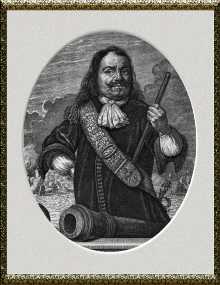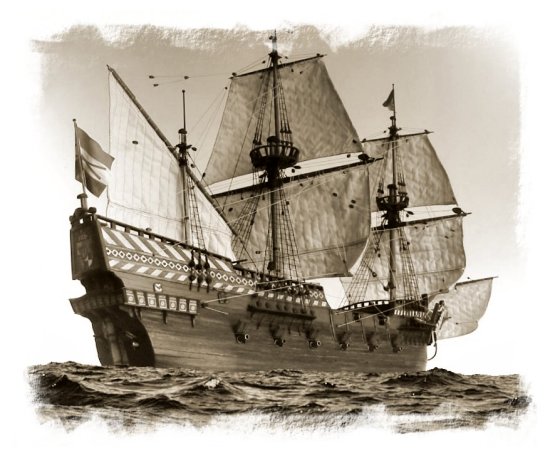The Dutch Golden Age
Images 1 |
2 | 3 | 4
| 6 Info | History
The 17th century is considered the “Golden Age” of Dutch sea-power. In 1650 The Dutch were the acknowledged masters of naval warfare, relying on superior sailing and close-quarter fighting to gain the upper-hand.
 |
Michiel Adriaanszoon de Ruyter (1607-1676),
was arguably the greatest admiral of the 17th century. |
During this period the Dutch were the foremost European shipbuilders,
building ships for the United Provinces, Spain, France, Denmark, Sweden,
Germany etc. The galleon 'Gilded Lion' shown below is a late 16th century
example. The Dutch would have built galleons like this for many other nations.
Notice the high and narrowing stern, as is even more distinct in
the features of the later Fluyt.
The Fluyt was the classic three-masted square-rigged merchant ship of the
17th century, built to be extremely economical in operation, carrying the
largest cargo and smallest crew possible. It had a wide hull with extreme
'tumblehome', rounded buttocks and a very narrow high stern. To enter the Baltic, the Danes imposed
a levy depending on the deck size of a vessel. The ever practical Dutch thus
developed a vessel that was wide in the hold for plenty of cargo, and narrow
on deck to minimize the duties to be paid.

Concept, content & Design: The Art of Age of Sail